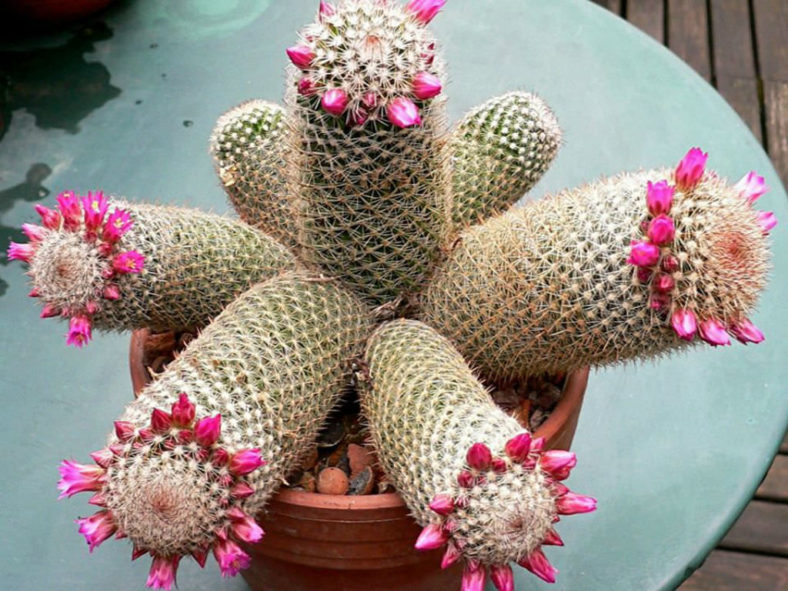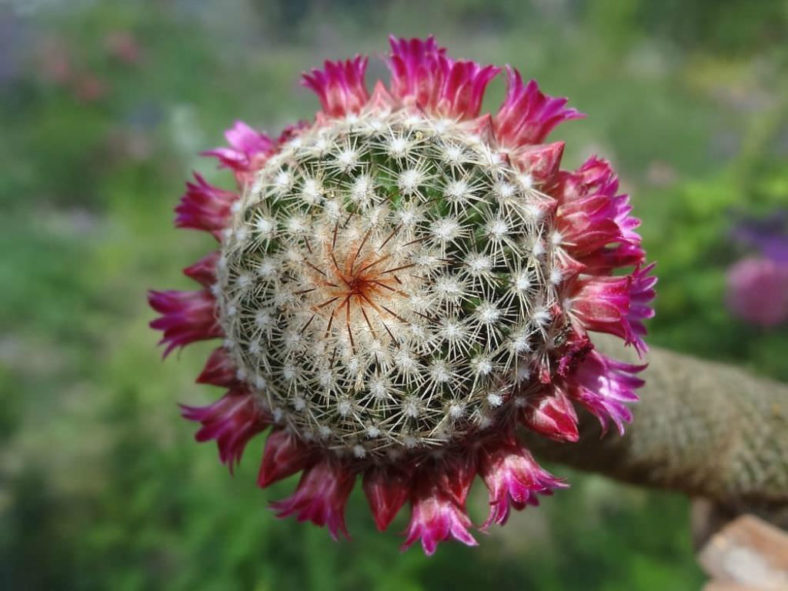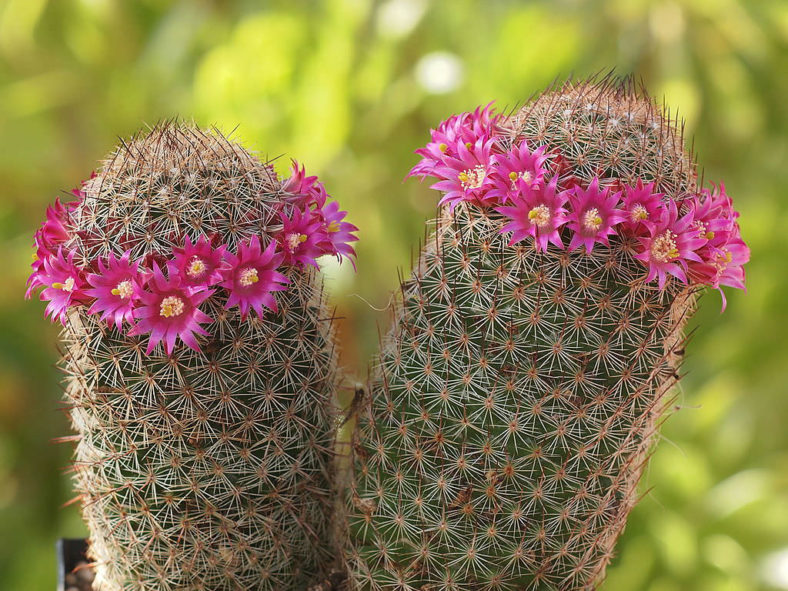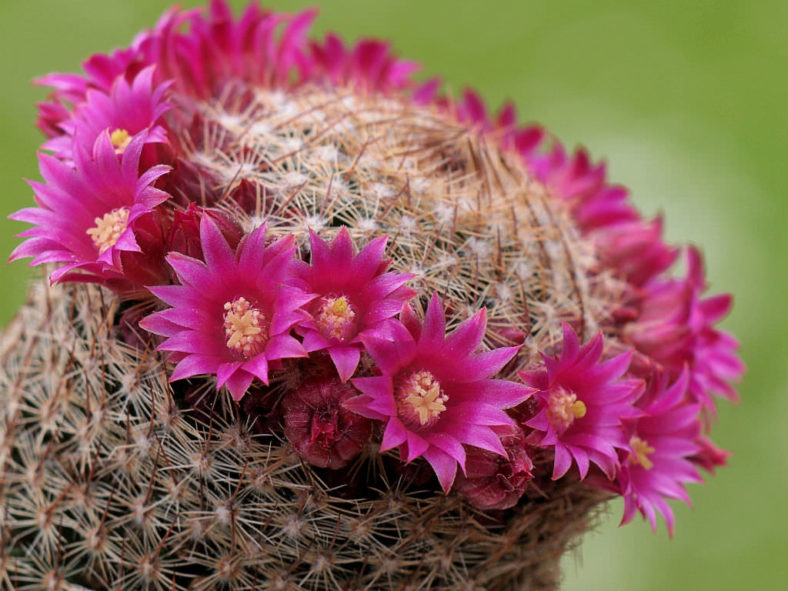Scientific Name
Mammillaria matudae Bravo
Common Name(s)
Thumb Cactus
Synonym(s)
Mammillaria compacticaulis, Mammillaria matudae f. duocentralis, Mammillaria matudae var. serpentiformis
Scientific Classification
Family: Cactaceae
Subfamily: Cactoideae
Tribe: Cacteae
Subtribe: Cactinae
Genus: Mammillaria
Origin
Mammillaria matudae is endemic to Mexico. It occurs in Michoacán, the State of Mexico, and Guerrero at elevations ranging from 2,300 to 4,100 feet (700 to 1,250 m).
Description
Mammillaria matudae is a small cactus with cylindrical stems covered with conical tubercles, each tipped with dense clusters of short spines, almost completely hiding the stem. The stems can grow solitary or slowly clumping and can reach a length of 12 inches (30 cm) and a diameter of 1.2 inches (3 cm). They tend to recline as they grow, giving the mature plant a characteristic sprawling habit. Each areole bears 18 to 20 radial spines and one central spine. The radial spines are very short, appressed, translucent white with a yellowish base, while the central spine is pointed upward, white to nearly black, becoming brownish or grayish with age, and can grow up to 0.2 inches (0.5 cm) long.
During the spring, the plant forms a distinctive, brilliant pink to purplish-red ring of flowers. The flower ring is 2 to 3 flowers thick and usually just an inch or two (2.5 to 5 cm) from the tips of the stems. The flowers are funnel-shaped and can reach up to 0.5 inches (1.2 cm) in length. The fruits are club-shaped, red with a greenish tint, and contain light brown seeds. They can grow up to 0.5 inches (1.2 cm) long.

Hardiness
USDA hardiness zone 9b to 11b: from 25 °F (−3.9 °C) to 50 °F (+10 °C).
How to Grow and Care
To encourage better flowering, allow the plants to enjoy a cooling period in the winter and suspend watering. Unlike many other cacti, which use their ribs as storage devices, the Mammillaria feature raised tubercles, from which spines emerge. When you water, the tubercles will expand for increased water storage. The flowers emerge from the axils of these tubercles on the previous year's growth, which accounts for their interesting halo effect. The cactus mustn't be exposed to prolonged dampness and standing water. Never let your cactus sit in a dish of water. Lastly, ensure fertilizer during the growing season for the best results.
Repot as needed, preferably during the warm season. To repot a cactus, ensure the soil is dry before repotting, then gently remove the pot. Knock away the old soil from the roots, removing any rotted or dead roots.
See more at How to Grow and Care for Mammillaria.
Links
- Back to genus Mammillaria
- Succupedia: Browse succulents by Scientific Name, Common Name, Genus, Family, USDA Hardiness Zone, Origin, or cacti by Genus
Photo Gallery
Click on a photo to see a larger version.


